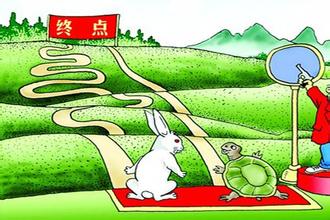President-elect Trump has indicated that one of his first acts in office will be to pull the United States out of the Trans-Pacific Partnership (TPP), which has yet to be put before Congress for ratification. Of course he is eager to get started on putting his plans into action, and the TPP has been one of the hot-button items in the campaign that spoke directly to many Americans’ concerns about the impact of free trade on their jobs and communities. While many of us may not have known that Taiwan was at the top of the Trump foreign agenda, recent actions suggest that in fact it is. But perhaps a word of caution would be useful.

Perhaps the Trump administration should not to jump away from the TPP and the eleven other signatory countries in the Asia Pacific and Latin American regions too quickly – much less go down the rabbit hole of Taiwan’s relations with China. Rather, the new Administration should take time to look beyond the slogans and emotion and reflect on what is really going on in the region.
The story of tortoise and the hare suggests the reason for caution, especially if we contrast the apparent Trump style with the Xi Jinping approach. In international relations, there is no rush to get to a non-existent finish line, and many distractions along the way. And in Asia, Beijing’s slow-and-steady approach could prove to be as successful as the proverbial tortoise’s. If the United States looks at its relationship with China as a race that it runs with a hare-like combination of grand gestures and benign neglect, it could very well find that in less than a decade, a line has been crossed and a new regional system – with global implications – is in place.
There are three main aspects to China’s relations with its neighbors in the region. First, it works its bilateral relationships by using its economic power. Sometimes this is by withdrawing favor, but most often it is by offering opportunities for countries to gain from Chinese foreign investment, foreign aid and access to the mainland’s market. The recent visit by Philippines President Duterte is such an example. While in Beijing, Duterte secured $13.5 billion in investment and aid deals, as well as the lifting of a ban on Philippines exotic fruit imports and Chinese travel to the island nation. At the same time, President Xi called for the two leaders to “set aside the disagreements” on the South China Sea and focus on improving the bilateral relationship.
Second, China participates in existing multilateral organizations, such as the ASEAN +3 and the Asia-Pacific Economic Cooperation (APEC), and is increasingly vocal about its vision for the region. Thus, while at the APEC Summit in Lima in November 2016, President Xi Jinping took the opportunity to push for an alternative to the TPP: the Free Trade Area of the Asia Pacific (FTAAP), which APEC began exploring in 2006. Under China’s APEC chairmanship in 2014, APEC agreed to a roadmap of concrete steps towards an FTAAP. Xi called on the group to " firmly pursue the FTAAP as an institutional mechanism for ensuring an open economy in the Asia-Pacific” because it “is a strategic initiative critical for the long-term prosperity of the Asia-Pacific." The United States, which is one of the 21 APEC member economies, is welcome to join the FTAAP, or it could consider the Regional Comprehensive Economic Partnership (RCEP), initiated by ASEAN in 2012. The sixteen RCEP countries – which do not include the United States – have already undergone fifteen rounds of talks, and Xi said in Lima that he would push for an early conclusion to the path towards an eventual FTAAP.
Thirdly, and perhaps most important, are the new institutions Beijing is building. The RCEP is one such example. Another is the Asian Infrastructure Investment Bank (AIIB), which could very quickly get to its anticipated $20-25 billion worth of annual support to infrastructure projects in the region. It has the support of 50 founding members as well as other multilateral organizations such as the World Bank, and endeavours to put in place a lean and efficient organization that will have a multiplier effect in terms of stimulating long-needed private sector investment in infrastructure. The Belt and Road Initiative (BRI) is an ambitious effort to link China through Central, Southeast, and South Asia to the west via expanded maritime and overland transport routes, as well as deeper interconnectivity through increased trade, investment, and information sharing. Beijing is creating new funding sources in order to achieve the BRI vision to create a modern, 65-nation version of the ancient Silk Road, including the $40 billion Silk Road Fund for medium to long-term investment in trade and economic cooperation projects. Its banks are issuing BRI-related bonds and working with other institutions to create a standardized Silk Road bond. Recently, the newly-founded Silk Road International Chamber of Commerce added the idea of an Intellectual Silk Road and an eSilkRoad that would build an online economy and facilitate cross-border commerce. The institutional infrastructure of Asia is being built up by China, not just its physical infrastructure.
These initiatives from the PRC should be welcomed by the United States, as Washington works to ensure its economic and security interests in the region. Trump should encourage U.S. firms to participate in Belt and Road projects. He should join the AIIB and demonstrate support for Asia’s development just as the United Kingdom, Germany, South Korea, and 53 other countries around the world have done. He should take another look at the TPP -- its benefits for the United States as well as its alternatives. And he will need to engage with China as he deals with the potential threats from North Korea and ensures that the South China Sea does not deteriorate into outright conflict. Finally, the incoming Administration should be sure that it is not just springing to capitalize on ‘sensitive spots’ like Taiwan in an attempt to show a new approach to China – perhaps assurance is more important than assertiveness at this point.
There is much for the U.S. to gain by building on the pivot to Asia that was begun by the Obama Administration. There is much to lose from hopping around from issue to issue based on broadly-conceptualized campaign discussions - or from jumping out of the region’s biggest conversations, such as trade. In Asia, the new Administration should heed the lesson of the tortoise and the hare and appreciate that U.S. interests are best served by steady, strong, and sustained engagement in the region.


